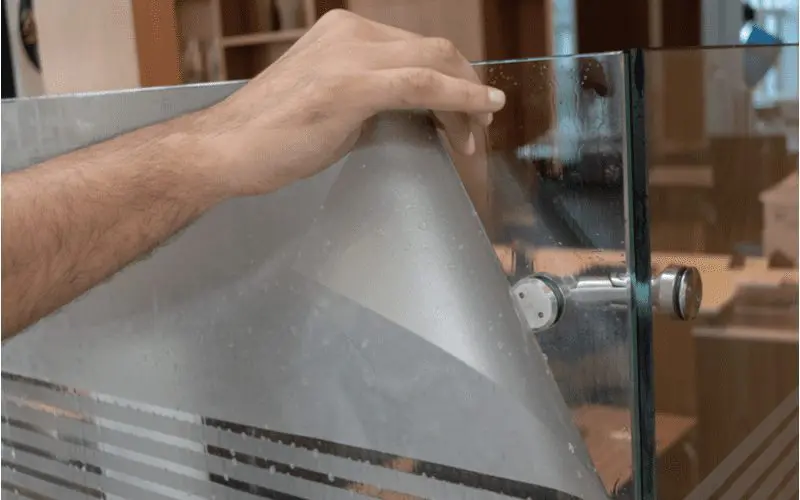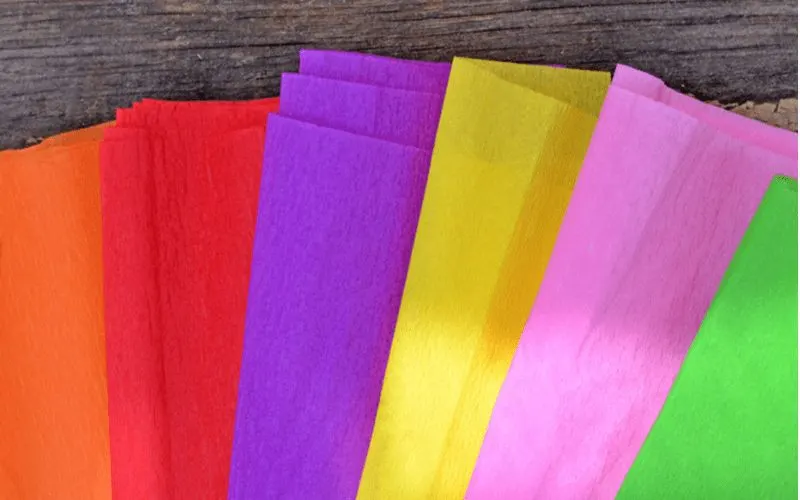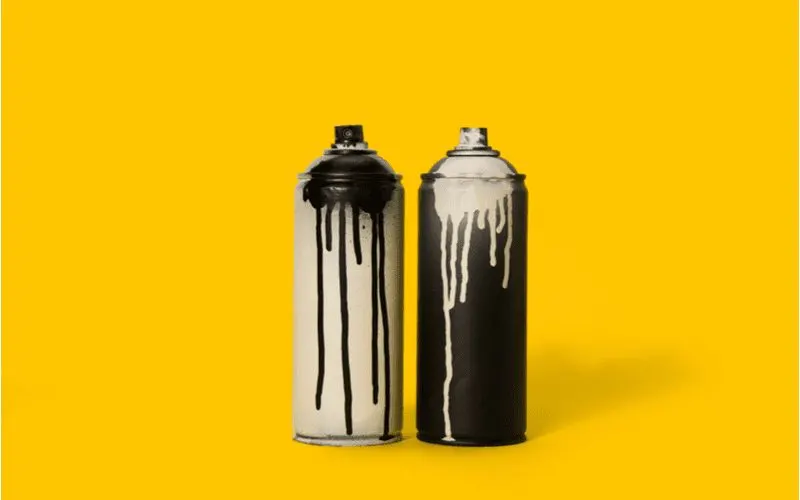Ever wondered how to frost glass? After all, it creates a decorative look while also increasing privacy.
Rather than spending a fortune on pre-frosted glass, read this article to learn how you can do it yourself.
Wondering How to Frost Glass?
There are different ways to frost glass on your own. These DIY methods take a few extra steps than just purchasing pre-frosted glass and paying to have it installed, but they achieve the same results, and they don’t hurt your wallet nearly as much!
Below, you’ll find step-by-step instructions for frosting glass using four different methods:
- Window Film
- Cornstarch and Tissue Paper
- Spray Paint
- Etching Cream
Keep in mind that these methods go in order from least permanent to most permanent.
How to Frost Glass With Window Film

3element/Shutterstock
Step 1: Gather Materials
Purchase some window film for the glass that you want to frost. On average, this costs around $6-$8 per square foot.
These films are designed to simulate different textures and tints on glass. They even come in various patterns, so you can use frosted glass as a decoration.
Step 2: Clean the Surface
Clean the glass surface with a glass cleaner. If there is anything like dirt or lint on the glass that’s to be frosted, the film won’t stick correctly, and it will be uneven.
Spray the glass cleaner on the glass surface and wipe it down with a lint-free cloth.
Step 3: Mix Dish Soap and Water
After the glass is clean, mix some water and dish soap in a spray bottle.
This solution will activate the static-cling adhesive, and the film will stick to the window.
Step 4: Spray the Glass
Spray the glass where you’ll be applying the film.
Step 5: Apply the Film
Apply the film to the glass and remove the air bubbles as you go with a squeegee. Be careful when you apply the film.
Even though this material is easy to remove, the film will not stick as well if removed and replaced on the glass.
How to Frost Glass With Cornstarch and Tissue

Iratxe_lopez/Shutterstock
Step 1: Create an Adhesive Paste
Create an adhesive paste by mixing one tablespoon of cold water with one tablespoon of cornstarch and then mixing in three-quarters of a cup of boiling water.
After you’ve created the mixture, let it cool and dry into an adhesive paste.
Step 2: Paint the Surface
Paint the adhesive paste onto the glass surface with a paintbrush. Make sure to put enough on every part of the glass that you want frosted.
This step can be messy, so it is a good idea to put down towels or paper in case of spillage.
Step 3: Apply Tissue Paper
Stick tissue paper to the parts of the glass that have been painted with the adhesive paste.
You can also opt to replace the tissue paper with lace. Make sure to apply the paper as evenly as possible to avoid wrinkles, tears, or air bubbles.
Step 4: Brush the Tissue
Once the tissue paper is stuck to the glass and looks the way you want it to, brush another layer of paste on top of the tissue paper to secure its position.
Once the paste dries, the paper will stay put until you decide to remove it. Make sure to limit the glass’s sun exposure when using this method since excessive heat may melt the paste.
How to Frost Glass With Spray Paint

LightField Studios/Shutterstock
Step 1: Gather Your Materials
Purchase glass frosting spray paint. This product can be found online or at most crafting and home improvement retail stores.
Depending on the size of the window, you may need to purchase more than one can.
Step 2: Clean the Glass
Spray the glass with a glass cleaner and wipe it dry with a lint-free cloth. If the glass is dirty, the paint won’t spray on evenly, and it may not stick as it should.
Step 3: Tape the Surroundings
Tape the surrounding areas. You’ll want to protect the floor and walls that surround the glass you will frost.
It’s also a good idea to wear clothes that you don’t mind getting paint on and wear a mask to protect yourself from the paint fumes.
Step 4: Spray the Glass
Spray a thin layer of the glass frosting spray paint on the glass and let it dry.
Once it dries, you’ll be able to decide if it is opaque enough or if it needs more paint. Continue to add layers until the glass has reached the desired opacity.
Step 5: Let It Dry
Let the paint dry on the glass for a few hours. If possible, don’t use the window or door that you sprayed until it has dried completely.
Once it is dry, you are free to enjoy your newly frosted glass.
How to Frost Glass With Etching Cream

Deanna Laing/Shutterstock
Step 1: Gather Your Materials
Purchase glass-etching cream. You can find etching cream online or at most crafting or home improvement retail stores.
Step 2: Read the Directions
Before opening the cream, carefully read and follow the directions printed on the bottle.
Etching cream has permanent effects and can be hazardous to the skin. Wear protective gloves and glasses, as many etching creams can cause severe burns.
Step 3: Clear the Area
Mask off the surrounding area with tape. Etching cream is permanent, so be careful not to spill it.
Step 4: Scrub With a Brush
Scrub the etching cream onto the glass using a rough brush. Make sure you scrub every part of the glass that you want frosted.
Step 5: Wait a While
Leave the cream on the glass for the amount of time that is specified on the bottle.
Step 6: Rinse the Cream
After the specified time is over, rinse the cream from the glass with warm water.
Things to Consider
Depending on which frosting method you choose, there are some things that you should keep in mind:
- Window film can be expensive if you are frosting a large amount of glass. Consider how much glass area you want to frost, and make sure you have enough film.
- The corn starch paste can be messy to apply and remove.
- If you use the window film and starch methods, direct sunlight and excessive heat exposure could cause the “frost” to wear out quickly.
- If you decide to use the spray painting method, be aware that it’ll be difficult to scrape off a glass surface if you make a mistake or no longer want it.
- If you live in a rental or aren’t sure how you feel about frosted glass yet, don’t start with the glass etching cream. Experiment with less-permanent methods first.
- Etching cream is permanent. If you ever want to have a clear view out of a window again, don’t use the etching cream to frost the glass.
So, How Do You Frost Glass?
There are a few ways to frost glass. Using window film, corn starch, and tissue paper is more temporary, while spray paint or etching cream will be more permanent. All four methods are relatively simple and can be done on most glass surfaces.
Whether you’re a homeowner looking to add a little more privacy or a renter wanting to improve the decor of your temporary living space, there are easy ways to frost glass on your own.

